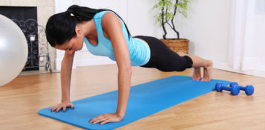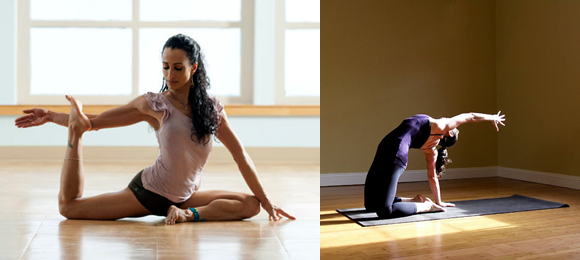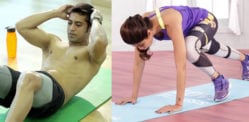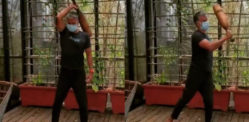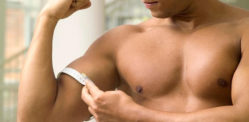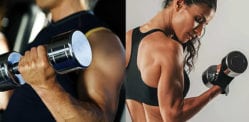Planks are easy enough to do during television adverts.
Fitness no longer remains behind the walls of the gym that you said you would join six months ago. Thanks to Instagram, we are now bombarded with endless pictures from the fitness fanatics of social media.
Whilst you sip on your hot chocolate with whipped cream, others are taking post-workout selfies in the gym mirrors. These kindly remind you that they are losing the calories you are (or were) currently content to put on.
Despite the general consensus, fitness does not have to be grueling. Some feel rejuvenated after a five kilometre run, others prefer the tranquility of yoga.
For those of us who would rather not pay gym prices, here are a variety of home fitness ideas to inspire you – from the comfort of your own home.
1. The Plank
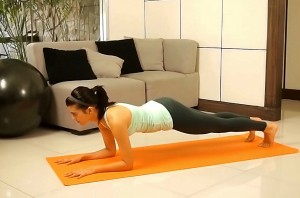
It is effective as both a stand-alone exercise, or as part of a fitness routine.
To incorporate it into a routine, for example, alternate it with high intensity or cardiovascular movements.
For those who like to multitask, planks are easy enough to do during television advertisements. In fewer words, there are no excuses!
How to:
- Start in a push-up position, as it is the easiest way to get into a plank.
- Bend your elbows 90 degrees, so that you are resting on your forearms
- Elbows should be directly beneath your shoulders.
- Be sure to not allow the back to curve under.
- Your body should form a straight line from head to feet.
- The longer you remain in the plank position, the better.
- Keep track of how long you can hold the plank and try to extend the time by a few seconds on each go.
2. Jumping Squats
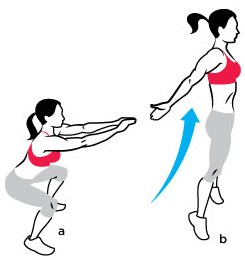
It is a full-body exercise that predominantly works the legs and gluteus maximus.
It also activates the abdominals, calves and hamstrings as well.
Your entire body will benefit from investing some time in this simple move!
How to:
- Stand with your feet shoulder width apart and lower yourself into a regular squat.
- Engage your core and jump up.
- You should land by lowering yourself back into the original squat position.
- Remember, as you squat, your knees should not protrude beyond your toes.
3. Wall Sits
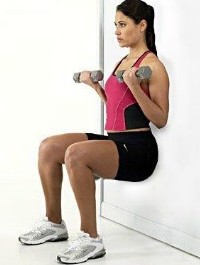
This exercise sounds easy enough in principle, but you will feel the burn soon enough.
The wall sit is a static movement that engages every muscle in the lower body, particularly the quadriceps!
Like the plank, this is an endurance exercise, so get ready to count or have a stopwatch nearby!
How to:
- Have your back straight against a wall with your legs slightly out in front of you.
- Slide down the wall until your hips and knees are bent at a 90 degree angle and simply hold the position.
- Keep track of how long you can hold the position and challenge yourself to extend the time by a few seconds on each go.
Yoga Moves for Beginners
Now for something a little different. Yoga is a fantastic form of exercise with an abundance of benefits. Improved flexibility, muscle strengthening, and protecting the spine are but a few of them!
Yoga has tremendous benefits for your emotional and spiritual well being. Doing yoga can subdue negative emotions that can ultimately lead to stress and depression.
Out of the many countless moves, here are two, foundational poses, which are perfect for beginners.
Since both these moves are stretches, incorporate them into your cool down session after your workout.
4. Downward Facing Dog
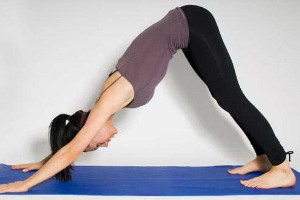
Your upper body strength will also improve, as it places weight on the arms and shoulders.
The flow of blood to the brain will improve concentration and calm the nervous system, meaning this move has both physical and mental benefits!
How to:
- Start on all-fours, with hands aligned directly under the shoulders and knees under the hips.
- Curl your toes under and lift your hips away from the floor and push yourself into the inverted ‘V’ pose.
- If it’s comfortable enough, lower the heels to the floor, to feel a deeper stretch.
5. Upward Facing Dog
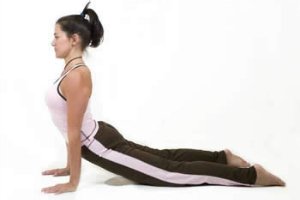
Focusing on the spine and arms, this move strengthens and stretches the upper body.
How to:
- Start by lying face down with your hands next to the ribs.
- Make sure the legs are extended and tops of the feet are pressed into the floor.
- During inhalation, press into your hands, straighten the arms and lift your torso and hips off the floor.
- Only the tops of your feet and your hands should be in contact with the ground.
However, don’t let that compromise your fitness and overall health. Your home can give you the same results as the gym for less money, travel and for some of us, embarrassment.
By doing a few sets of some, or all of these moves on a regular basis, you will begin to feel and see the benefits physically and mentally.



















































